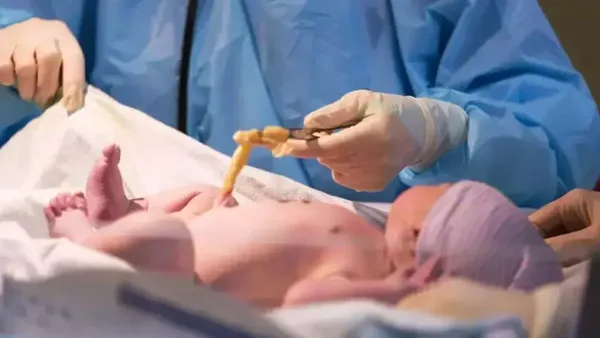
The sense of protecting and safety of the child’s future-when it comes to their health-is one of the deepest and permanent feelings of a parent. This feeling of responsibility often gets deeper at birth, especially in today’s run -of -the -mill and uncertain world, this moment is filled with both hope and vulnerability. In this context, more and more parents are turning to an alternative that was once considered unconventional: preserving the umbilical cord blood of their newborn, a valuable resource that can provide a life-saving solution in the event of a serious illness someday.
कराना Soon after birth, there are life -saving stem cells collected and stored in the stored umbilical cord blood which have been used to revive healthy blood in over 30,000 implants worldwide. These stem cells have also been used to treat various conditions including blood disorders, genetic and immune diseases, and many other deadly diseases.
But first, it is important to understand what are stem cells obtained from umbilical cord blood. In the intervening, umbilical blood stem cells are the formation material of the human body. They are specific or indispensable, meaning that they have the ability to develop specific cells. For example, a stem cell inside the fetus will eventually lead to each cell, tissue and organ in the fetus. Stem cells are of two types – hematopoietic, which are found in umbilical blood and bone marrow and mesencimal, which can be separated from umbilical cord tissue and other sources and are also known as ‘organ formation’ cells.
Carboys collected at birth are valuable because it contains special stem cells, which are called hematopoietic stem cells, which have the ability to revive and treat many disorders to blood and immune system – which require stem cell transplantation, such as bloody and lymphoma, such as leukemia and lymphoma, such as blood - disorders, aplastic anemia, and Thalassi.
Today parents can place their baby’s umbilical blood in a private bank, where it is kept for personal use of the family. There is also an alternative to social banking, where umbilical blood becomes part of a social reserves. If needed, it can be matched and used by any member involved in this system, making it also a resource for a broader community.
The thing that makes the umbilical cord isolated is that it provides specific benefits compared to the bone marrow collected aggressively. The umbilical cord blood is biologically young and “newborn” of nature, which means that the recipient’s body is less likely to attack. This reduces the outbreak of Graft Verses Host Disease (GVHD) and also reduces complications as well as it reduces the chances of immune response. It also has a higher regeneration capacity than bone marrow stem cells and also lower the risk of exposure to the virus than stem cells obtained from adult tissue.
Another major benefit is availability. When umbilical cord blood is stored, stem cells are easily available when the transplant is required, which is not always sure in the case of bone marrow. In fact, it is believed that the umbilical cord is 10 times more stem cells than stem cells found in the bone marrow in the blood. The process of storage and storage of umbilical cord blood is also much more simple, it is quick, painless and completely non-invasive, there is no danger to both mother or child.
Non-productive signs in the medical world also have a remarkable interest in the discovery of the use of umbilical cord blood. Researchers are studying from the beginning of the 2000s to the middle, studying how umbilical blood can be beneficial for patients with neurological conditions such as autism spectrum disorder, cerebral palsy, etc. A study using cord blood circulation in children suffering from cerebral palsy[1] Suggested that one year after treatment, there was a improvement in motor work in children, which was sufficient to pursue the study. These studies attract more attention to the potential therapeutic value of umbilical cord blood. With the speed of development of technology at unprecedented speed, the possibility of treating spinal cord injuries by umbilical cord or being able to reversed the effects of diseases like MS (multiple sclerosis) or Parkinson’s, and its ability to regenerative therapy, are promising.
In future, one means of accessing these techniques will be the banking of children’s stem cells. The current research is now being done for the development of new targeted cell remedies such as chimeric antigen receptor-natural killer cells (Car-NK).